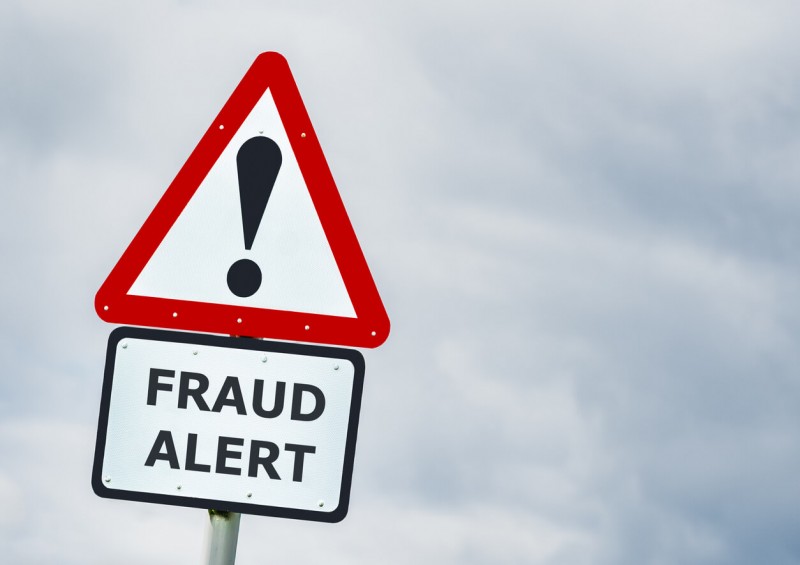Notice of Correction: How to put it on your credit report

Suspected fraud activity should not be ignored. If you’ve been the victim of a scam that’s damaged your credit score or are aware of a breach of your personal data, to protect yourself (and your credit rating) you can place a fraud alert, known as a Notice of Correction, on your credit report.
So what is a Notice of Correction, how does it work and how do you put one on your credit report? Find out here.
What is a Notice of Correction?
A fraud alert, known in the UK as a Notice of Correction (NOC), is a note that can be added to your credit file, for free, to prevent you from being a victim of identity theft or credit fraud.
A fraud alert on a credit report will be flagged up to lenders whenever they receive an application for a loan or credit in your name and make their usual credit checks.
As soon as a credit history check is carried out by a lender, they will see the NOC which will then prompt them for a password. The lender will then ask the applicant for this password to verify it’s actually you applying for a loan or credit account and not a fraudster impersonating you. Having an NOC will delay any applications you make for credit, however, but it does help ensure that noone is trying to falsely take out credit in your name.
The note can be up to 200 words and should clearly state that you are concerned about identity theft and fraudsters applying for credit in your name.
Equifax recommends using the following wording for your Notice of Correction:
I, [insert your name], have reason to believe that my personal details may be used fraudulently in an attempt to obtain credit. I would ask any companies searching my credit information with [insert name of credit agency: Equifax, Experian or TransUnion] to ask for the password in order to confirm my identity.
If you suspect you’ve been the victim of fraud, to check you should take a look at your credit report with all of the UK’s three main credit reference agencies. Head over to checkmyfile.com to request a report from all three - by signing up now, you'll get a 30-day free trial and a monthly charge of £14.99 will apply after this. However, you can easily cancel your subscription if you don't wish to pay.
If you’ve been the victim of any type of fraudulent crime, in addition to adding a Notice of Correction to your credit files, you should contact the police/Action Fraud.
Notices of Correction are free but you can alternatively or additionally pay for a fraud alert service with Cifas.
You might like: How to fix your credit after being scammed
What is Cifas?
Cifas is a nonprofit, fraud prevention service that manages the UK’s largest fraud database to help protect individuals or organisations from fraud and financial crime.
If you feel vulnerable because your personal data has been breached or you have been a victim of fraud, you can pay £25 for protective registration with Cifas.
Cifas will then add your personal details to their secure National Fraud Database, so if any criminals apply for credit or a loan in your name, this will be flagged up to Cifas’ members. A Cifas entry will also be added to your credit report.
The majority of the UK’s financial institutions are members of Cifas and a Cifas’ credit fraud alert (Cifas markers) will be flagged up to any financial company that runs a credit check on you.
Check your score with Checkmyfile
How to put a Notice of Correction on your credit report
You will need to contact each of the following credit reference agencies separately to request that a Notice of Correction be added to each of your credit files:
- Experian - to request an NOC with Experian, click on the link, click on ‘Fraud’, then select ‘I want to add a password to my Experian Credit Report. Scroll down to complete the necessary details in the text box.
- Equifax - for a credit fraud alert with Equifax, click on the link and then click on the button ‘Do you still have questions?’. Log into your Equifax account (if you have one) and complete the form on the screen. If you don’t have an account and don’t wish to open one, then you can write to Equifax at the address given via the link.
- TransUnion - to add an NOC to your TransUnion file, you can send a request by post to: TransUnion UK, Dispute Team, PO Box 491, Leeds, LS3 1WZ or email: [email protected]. Make sure you include the wording you’d like adding (but no more than 200 words), your full name, date of birth and address, and if you send a letter, make sure you sign it.
The wording of your Notice cannot name a third party or include confidential information and must not be libellous or defamatory. Make sure any password you provide is unique and does not contain any personal information.
How to remove fraud alert from credit report
To remove a Notice of Correction, you will need to contact the relevant credit agencies individually - click on the following links for contact info:
- Experian
- Equifax
- TransUnion - send a removal request by post to: TransUnion UK, Dispute Team, PO Box 491, Leeds, LS3 1WZ or by email to: [email protected]. Make sure you include your full name, date of birth and address. If you send a letter, make sure you sign it.
